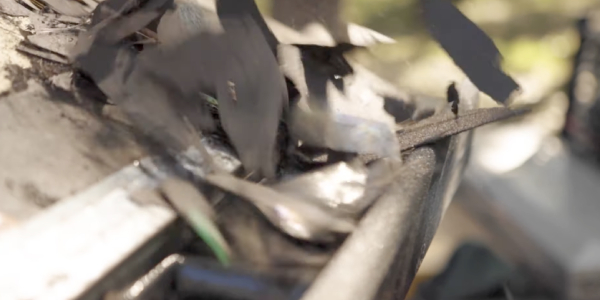Installing KnuckleHeads on a Re-Roof Project: A Value Proposition

By GREEN LINK Engineering.
Is protecting a $55,000 roof job worth a few hundred dollars?
Recently, a building owner in Michigan contracted for a re-roof of his building. A ten-man crew installed a PVC membrane to the roof. Pipes and HVAC equipment, originally positioned on wood sleepers, were moved to allow for the installation. Once the job was completed, the contractors put the same wood sleepers back in place, setting conduit pipes and air conditioning units back in their original location.
But the wood sleepers had already degraded from weathering and biological attack. In some cases, blocks had split and shredded.
The building owner was familiar with the KnuckleHead line and instructed the contractor to replace the deteriorating wood sleepers with KnuckleHead supports. The replacement was managed in a few hours. Lite Pipe and Strut KnuckleHeads were used for pipelines and conduit, and an unlevel air conditioning unit was righted by height-adjusting the KnuckleHead supports.
The total costs of the re-roof was $55,000. The cost of the KnuckleHead supports amounted to $380 plus a few hours of labor.
These numbers raise a critical question about value: is it worth a few hundred dollars to install an engineered rooftop support system that offers several important advantages when compared to wood sleepers? The logical answer has to be “yes.” Loose-laid KnuckleHeads install just as easily as sleepers but offer numerous benefits including weathering and physical properties, height adjustability, and stability. And aesthetics are important, too: a brand new roof with a well-designed, integrated set of products helps make the re-roof look like it was worth the money.
Some roofers point out that once the roof is completed, cutting a batch of sleepers from a treated board and slipping them under pipes and HVAC equipment is the easiest and most inexpensive approach. But wood sleepers will deteriorate, especially if cut from treated board, which exposes untreated end-grain to the elements. For a little more expense, the KnuckleHead system can be installed that will easily last the life of any roof. Roof membrane technology has made significant advances over the past 25 years. Shouldn’t the rooftop support system feature the latest advancements?
But whose responsibility is it to make the call? Many roofing contractors focus on the roof itself. If there is nothing in the contract about supports, they may just leave the original installation in place, as the above case illustrates. Others may replace wood blocks with new blocks, but the benefits of an engineered system are significant.
Decision makers may involve the HVAC contractor, the roofer, the roof consultant, the specifier, the building owner, and/or the facility manager. It’s important that each be aware of the value of spending a few hundred dollars to protect a roofing project that can easily run into six figures.






















Comments
Leave a Reply
Have an account? Login to leave a comment!
Sign In